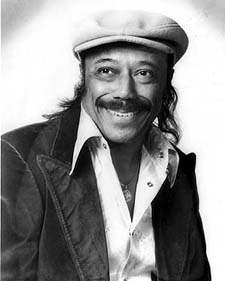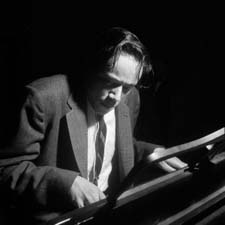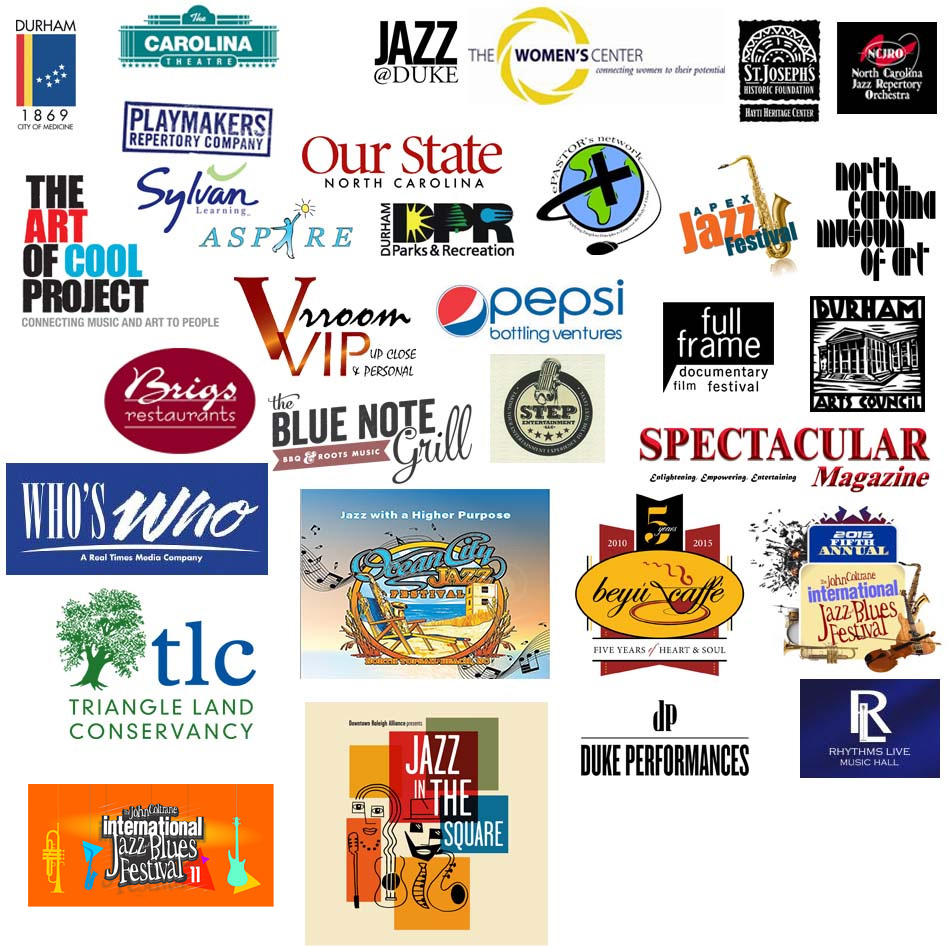Horace Silver
 Horace Silver, jazz pianist, composer, and bandleader, was born on Sept. 2, 1928, in Norwalk, Conn. Silver performed with Stan Getz from 1950 – 51 before leading his own trio in 1952. Partnering with Art Blakey, he led the Jazz Messengers from 1954, then formed his own quintet in 1956, where he performed his own compositions in arrangements that provided the template for much of the hard bop of the 1950s and ’60s. Influenced by Bud Powell and Thelonious Monk, Silver combined the sophistication of bebop with the earthiness of the blues in compositions such as “The Preacher,” “Opus de Funk,” and “Sister Sadie.”
Horace Silver, jazz pianist, composer, and bandleader, was born on Sept. 2, 1928, in Norwalk, Conn. Silver performed with Stan Getz from 1950 – 51 before leading his own trio in 1952. Partnering with Art Blakey, he led the Jazz Messengers from 1954, then formed his own quintet in 1956, where he performed his own compositions in arrangements that provided the template for much of the hard bop of the 1950s and ’60s. Influenced by Bud Powell and Thelonious Monk, Silver combined the sophistication of bebop with the earthiness of the blues in compositions such as “The Preacher,” “Opus de Funk,” and “Sister Sadie.”
Steeped in blues and a student of a church organist, Silver drew upon many sources for his musical vision, including Latin sounds that imbued his music with an intoxicating rhythmic quality. His inventive writing for small group settings, featuring a saxophone-trumpet front line, became a model for jazzmen of the post bop era. During a period when most jazz recording dates became “blowing sessions” in which the participants played unrehearsed standards and “head arrangements,” Silver maintained, within his small groups, a sense of unique compositional form. His tightly rehearsed groups became known for their impeccable sense of swing, while retaining a soulfully powerful sound. Many of Silver’s compositions such as “The Preacher,” “Juicy Lucy,” “Nica’s Dream,” “Sister Sadie,” and “Filthy McNasty” have become modern jazz classics and continue to find their way into the repertoires of jazz artists around the world.
Silver’s father, John Tavares Silver, hailed from the Cape Verde Islands, a former Portuguese colony off the west coast of Africa, and worked at the Norwalk Tire Factory. A violinist and guitarist, he played music at family parties. As a member of the Norwalk High School band, Silver played tenor saxophone under the influence of Lester Young. During his second year in high school, he took up the baritone saxophone, while pursuing his piano studies.
After graduating from high school, Silver continued playing piano, and primarily studied blues and boogie woogie players. His early training included memorizing Avery Parrish’s classic blues solos on Erskine Hawkins’s recording of “After Hours.” He also studied the music of Charlie Parker and jazz pianists Art Tatum and Teddy Wilson. As he later recounted in Talking Jazz, “Teddy Wilson – I copied a little of his stuff. I could copy stuff off the record. I couldn’t catch all of it. I bought a couple of Teddy Wilson piano folios and tried to practice them. Art Tatum piano folios were impossible for me to read. I couldn’t get through them, there were so many thirty-second, sixty-forth notes. It looked like somebody took some ink and just threw it at the paper.”
 In 1950, while performing with Harold Holt in Hartford, Connecticut, Silver was discovered by saxophonist Stan Getz. Getz hired him for a group that toured extensively between 1950 and 1951. Within weeks of an August 1951 studio session, Silver left Getz’s group in order to establish himself in New York City’s flourishing jazz scene. By performing at Birdland, he was able to accompany many of the leading jazz talents of the day. In “Song of the Hawk,” Silver recalled playing Birdland with Hawk [Coleman Hawkins] and bassist Curly Russell. During the early 1950s, he performed with saxophonist Lester Young and bebop bassist Oscar Pettiford.
In 1950, while performing with Harold Holt in Hartford, Connecticut, Silver was discovered by saxophonist Stan Getz. Getz hired him for a group that toured extensively between 1950 and 1951. Within weeks of an August 1951 studio session, Silver left Getz’s group in order to establish himself in New York City’s flourishing jazz scene. By performing at Birdland, he was able to accompany many of the leading jazz talents of the day. In “Song of the Hawk,” Silver recalled playing Birdland with Hawk [Coleman Hawkins] and bassist Curly Russell. During the early 1950s, he performed with saxophonist Lester Young and bebop bassist Oscar Pettiford.
In 1954, Silver led a quartet at Minton’s Playhouse with saxophonist Hank Mobley and bassist Doug Watkins. In February of 1954, he appeared as a member of the Art Blakey Quintet for the Blue Note album “At Night At Birdland” volumes one and two. Under Blakey’s leadership, Silver joined trumpeter Clifford Brown, Lou Donaldson, and bassist Curly Russell for a showcase of hard bop which included his three original compositions “Split Kick,” “Quicksilver,” and “Myreh.” Nick Catalano, author of Clifford Brown: The Life and Art of the Legendary Jazz Trumpeter, emphasized that the Birdland album “has become a jazz classic for many reasons; the brilliant improvisations, the innovative Silver compositions, the quintessential hard bop musical statements, and the production standards by Rudy Van Gelder and Blue Note.”
Because of its versatility and modern edge, Silver’s music influenced musical trends outside mainstream jazz. John Storm Roberts, in his book Latin Jazz: The First of the Fusions, commented that during the 1970s “Silver’s soul-Latin mix would give another shot in the arm to the movement toward a funk-Latin jazz fusion.” During the 1980s, Silver’s Latin-tinged music reached London discos, and influenced many of “the Young Lions” of the new acoustic jazz school. However, as Stuart Nicholson observed in Jazz: The 1980s Resurgence, “Silver failed to capitalize on the bebop revival of the 1980s in the way several of his contemporaries did.” In 1981, Silver formed Silveto Records. As he explained in Talking Jazz, the label was devoted to “self-help, holistic, metaphysical music” intended to integrate “a trilogy, consisting of spirit, mind and body.” Among the best of his Silveto recordings was “Music to Ease Your Disease.” This album featured Silver’s former saxophonist Junior Cook, trumpeter Clark Terry, bassist Billy Drummond, and drummer Billy Hart. Silver returned to his hard bop roots during the 1990s, and recorded the Columbia releases “It’s Got to Be Funky” in 1993 and “Pencil Packin’ Papa” in 1994. He also recorded “The Hardbop Grandpop!” in 1996 and “Jazz Has a Sense of Humor” in 1999 for the Impulse! label. His 1997 Silveto release, “A Prescription For the Blues,” featured the horns of Michael and Randy Brecker, bassist Ron Carter, and longtime sideman Louis Hayes. Silver’s music was included on a Blue Note remix release in 1998, and appeared as part of the company’s three CD compilation, “The Blue Note Years.”
A musician whose musical career spanned from hardbop to a modern sound drenched in a “funky” earthiness and Latin-Caribbean sound, Silver has created a formidable and influential style by distilling the kinetic energy of bebop into a music of emotional intensity and beauty. In his book Talking Jazz, Ben Sidran noted, “To this day jazz players ‘quote’ his [Silver’s] writing and playing, and many of the young lions, those emerging in the popular press, try their best to imitate his compositional devices and to reinvent the Horace Silver sound.”

